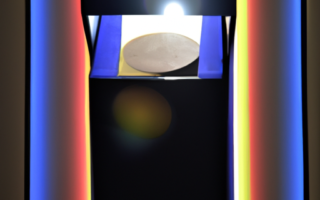Origins of Conceptual Art: Tracing its Roots in the 20th Century
Understanding Conceptual Art: Exploring its Origins and Significance
Conceptual art emerged as a significant movement in the 20th century, challenging traditional notions of art and pushing the boundaries of artistic expression. It was a radical departure from the conventional understanding of art as a physical object, emphasizing the primacy of ideas and concepts over visual aesthetics.
The origins of conceptual art can be traced back to the early 20th century, with the Dada movement as one of its key precursors. Dada artists rebelled against the established art world, seeking to defy and ridicule its conventions. They rejected the notion that art should be confined to traditional media like painting and sculpture, instead embracing unconventional materials and techniques.
Marcel Duchamp, a prominent figure in the Dada movement, played a critical role in shaping conceptual art’s foundations. Duchamp’s readymades, ordinary objects presented as art, challenged the very definition of artistic creation. By elevating everyday objects such as a bicycle wheel or a urinal to the status of art, Duchamp disrupted the traditional concept of art as something crafted by the artist’s hand.
Another essential precursor to conceptual art was the Fluxus movement, which emerged in the 1960s. Fluxus artists rejected the idea of art as a commercial commodity and aimed to create works that could be accessible to the masses. They blurred the lines between art and everyday life, incorporating elements of performance, music, and happenings into their work.
It was in the 1960s and 1970s that conceptual art gained widespread recognition and became an established artistic movement. Artists such as Joseph Kosuth, Sol LeWitt, and Lawrence Weiner played significant roles in shaping the conceptual art landscape during this period.
Joseph Kosuth’s influential essay „Art after Philosophy” articulated the key tenets of conceptual art, emphasizing the importance of ideas and language in art. He argued that art should be seen as a linguistic proposition, challenging viewers to engage with the underlying meanings and concepts behind the artwork.
Similarly, Sol LeWitt’s minimalist approach to conceptual art focused on the idea as the primary artistic element. He emphasized the significance of instructions or guidelines for the execution of an artwork, reducing the artist’s role to a conceptual thinker rather than a craftsman.
Lawrence Weiner, known for his text-based works, further expanded the boundaries of conceptual art by exploring the relationship between language and art. His artworks often consisted of simple statements or instructions, inviting viewers to interpret and engage with the ideas presented.
In conclusion, the origins of conceptual art can be traced back to the early 20th century and were influenced by movements such as Dada and Fluxus. These artistic precursors challenged traditional notions of art and paved the way for the emergence of conceptual art in the later decades. Artists like Marcel Duchamp, Joseph Kosuth, Sol LeWitt, and Lawrence Weiner played pivotal roles in shaping the conceptual art movement, emphasizing the primacy of ideas and concepts in art.
Significance of Conceptual Art: Analyzing its Impact on Contemporary Art Practices
Understanding Conceptual Art: Exploring its Origins and Significance is a comprehensive study that delves into the world of conceptual art, analyzing its impact on contemporary art practices. Conceptual art, which emerged in the 1960s and 1970s, is a revolutionary movement that challenged traditional forms of artistic expression.
One of the key aspects to understand about conceptual art is its significance in shaping contemporary art practices. Unlike traditional art forms that focus on aesthetics and craftsmanship, conceptual art places greater emphasis on the idea or concept behind the artwork. The physical manifestation of the artwork becomes secondary in comparison to the idea it represents.
This shift in perspective has had a profound influence on contemporary art practices. It has opened up infinite possibilities for artists to explore and experiment with new forms of expression. Conceptual art has encouraged artists to think beyond traditional boundaries and challenge societal norms, allowing them to address a wide range of social, political, and cultural issues through their work.
Furthermore, conceptual art has also redefined the role of the viewer. Traditionally, the viewer was seen as a passive observer of the artwork. However, conceptual art requires active participation from the viewer, as they are encouraged to engage with the concept behind the artwork, rather than focusing solely on its visual aesthetics.
Conceptual art has also brought about a shift in the perception of art itself. It challenges the notion that art needs to be confined to museums or galleries, as it can be created and experienced in various contexts. This has led to the emergence of unconventional art forms such as installations, performances, and interactive art.
Moreover, conceptual art has played a significant role in the democratization of art. By shifting the focus from technical skills to conceptual ideas, it has made art more accessible and inclusive. Artists from diverse backgrounds and with varying skill levels can participate in the art world, as the emphasis is no longer solely on technical mastery.
In conclusion, the significance of conceptual art in shaping contemporary art practices cannot be overlooked. Its emphasis on ideas and concepts, active viewer participation, redefinition of art, and democratization of the art world have made it a powerful and influential movement. Understanding conceptual art is essential for anyone interested in exploring the evolving landscape of contemporary art.
Exploring the Essence of Conceptual Art: Unpacking its Philosophical and Intellectual Foundations
Understanding Conceptual Art involves exploring not only its origins and significance, but also the essence of this fascinating art form. Unpacking the philosophical and intellectual foundations of Conceptual Art allows us to delve into the mindset of the artists behind it and gain a deeper appreciation for their creative vision.
Conceptual Art emerged in the late 1960s as a reaction against traditional art forms that prioritized aesthetic appeal and craftsmanship. Instead, Conceptual Artists sought to shift the focus onto ideas and concepts rather than the physical manifestation of an artwork.
At the heart of Conceptual Art lies the belief that art is not limited to traditional mediums or materials. Artists began exploring unconventional forms of expression, such as text, language, performance, and even everyday objects. This shift challenged the very definition of art, as it questioned the need for tangible objects and emphasized the importance of intellectual engagement.
The philosophical foundations of Conceptual Art trace back to movements such as Dada and Fluxus, which rejected conventional artistic norms and valued artistic concepts over technical skill. Dadaists sought to provoke and disrupt societal norms through their art, while Fluxus artists aimed to blur the line between art and life, integrating everyday experiences into their work.
Conceptual Art also drew inspiration from various philosophical movements, including existentialism, phenomenology, and semiotics. These philosophical underpinnings contributed to the emphasis on the viewer’s interpretation and engagement with the artwork. Through Conceptual Art, artists aimed to stimulate intellectual and philosophical discourse, challenging viewers to think critically and question the nature and purpose of art.
Another significant aspect of Conceptual Art is its rejection of the art market and commodification of art. By prioritizing ideas and concepts over tangible objects, Conceptual Artists aimed to create an art form that was accessible to all, transcending the limitations imposed by galleries and institutions.
Understanding the intellectual and philosophical foundations of Conceptual Art allows us to appreciate the intent and purpose behind these unconventional artworks. By exploring the essence of Conceptual Art, we gain insight into the artists’ desire to provoke thought, question artistic norms, and challenge our perceptions of what art can be.



